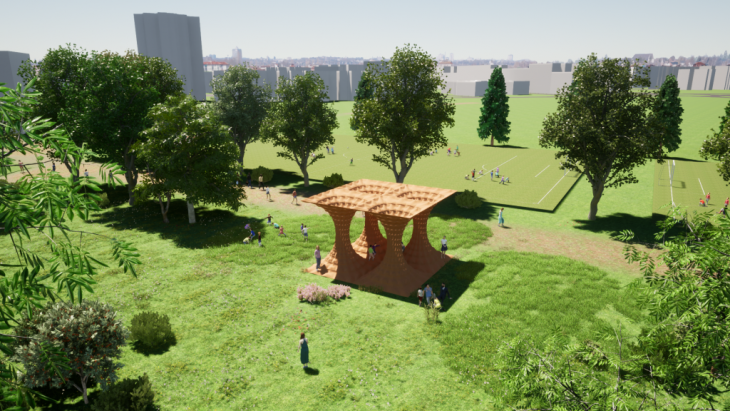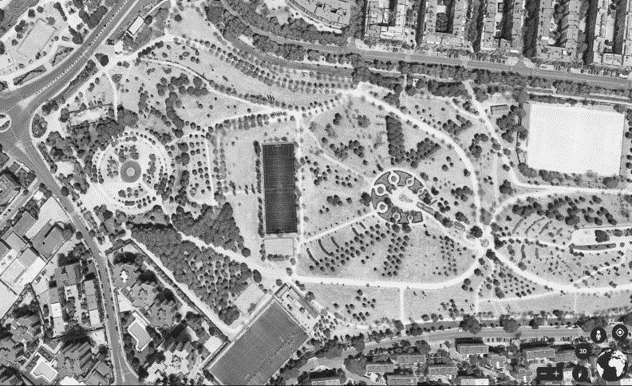SHELL MUQARNAS
Our design was based on extracting the rules of two systems: cotton flower shells and muqarnas.
COTTON FLOWER
A cotton boll is composed by 5 parts and it holds a 5 mass of fluffy staple fiber. A cotton boll is rolled outside when it cracks. Rain is flown downward through the surface of rolled cotton boll. Fluffy staple fiber is composed of pure cellulose. A Fluffy stable fiber is formed around the seeds of a plant. The fiber grows in a protective case (rolled cotton boll) and it holds the fiber until it increases enough to disperse its seeds.
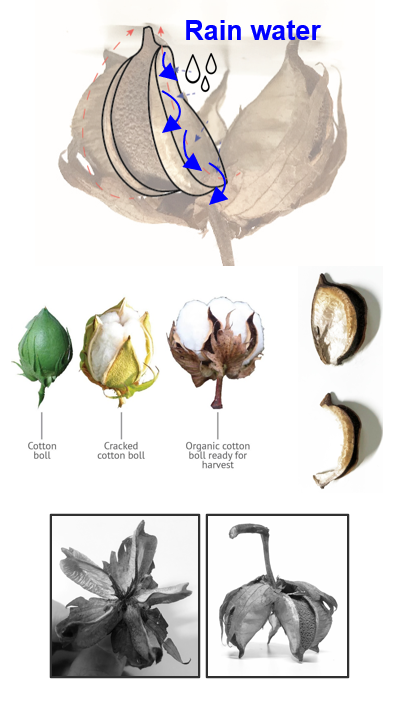
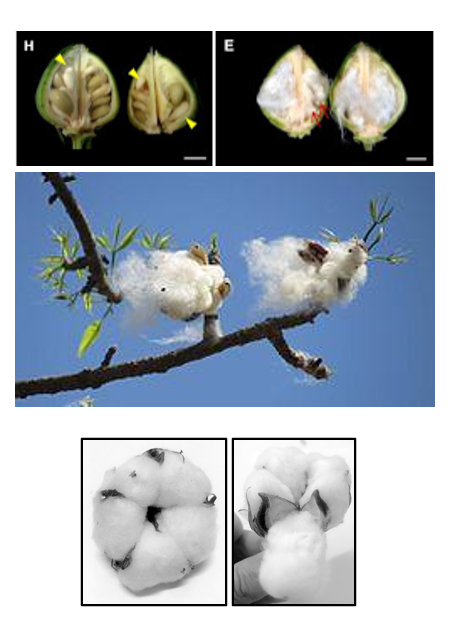
The shell of the cotton boll inspired me as a shell structure and water collecting system. The rule given for the 1st study was below;
- Iteration of 1 shell element by giving rules of scale and rotation.
- Propose a pavilion that has a radial symmetry system
- Finding a different geometry form from the symmetry element
- Passive design pavilion for rainwater collecting system
With radial symmetric arrangement by controlling ‘NU Inner curve’, we got a rib structure for a dome shape pavilion. At the second experimentation by giving different scale values for the ‘NU outer curve’, the intersection of growing shells makes different shells.

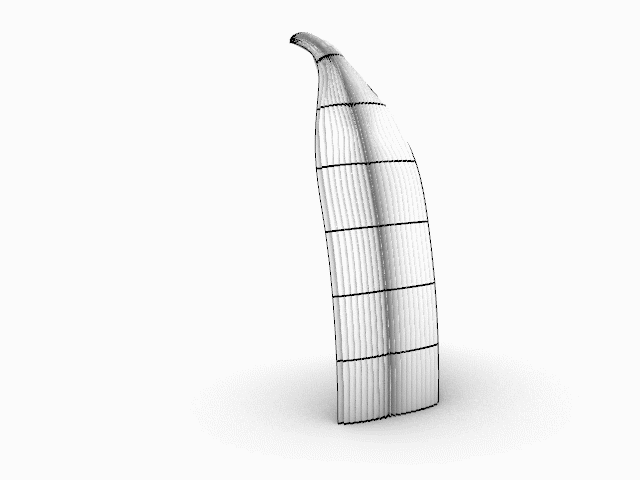
A simple shell made a dome with a symmetric rotation then this dome made another radial configuration. By combining two shells, we got a shell for structure with a rib shape and functional outer skin. Although the rib structure can support the outer shell, if the outer shell can be a structure itself, the fabrication cost can be economised.
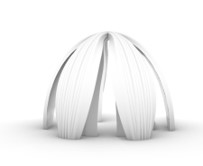
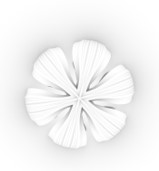
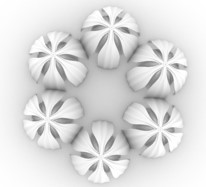
MUQARNAS
Muqarnas, basically are domes with module aggregations based on a 2D pattern. Our objectives were to be able to understand the rules under Islamic 2D patterns, and study radial symmetry, but also research on module aggregation.
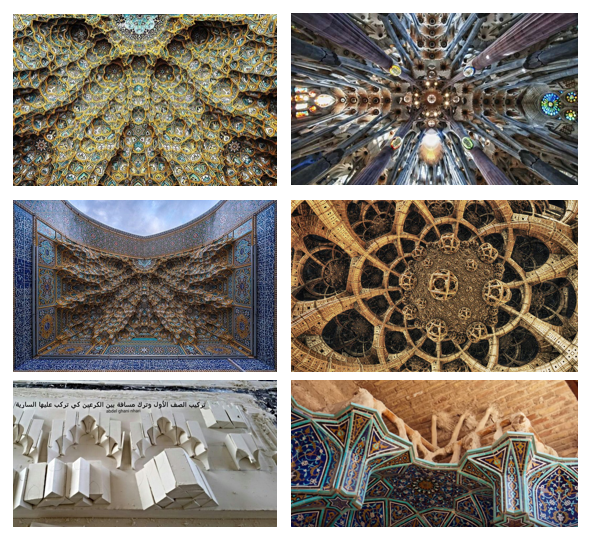
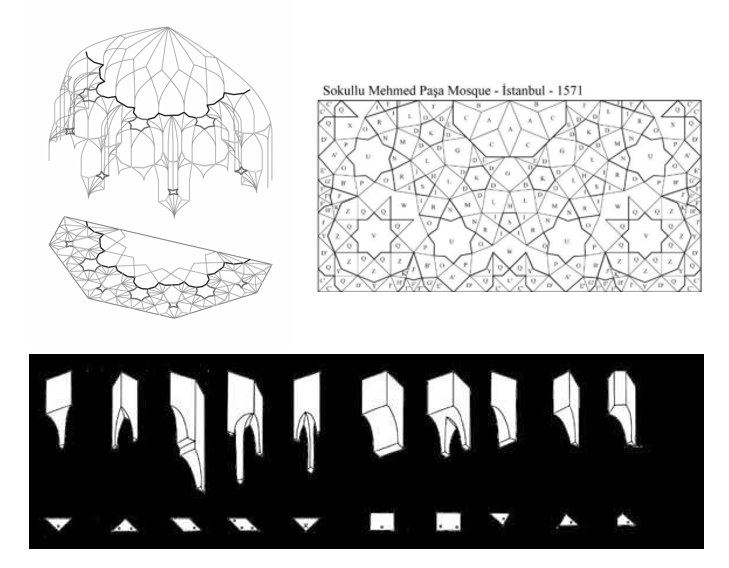
So we started analyzing the symmetry rules on the 2D patterns of some of the most important muqarnas- And then studied about the different types of radial symmetry, 4 fold, 5 fold, 6 fold, and how they develop different shapes.
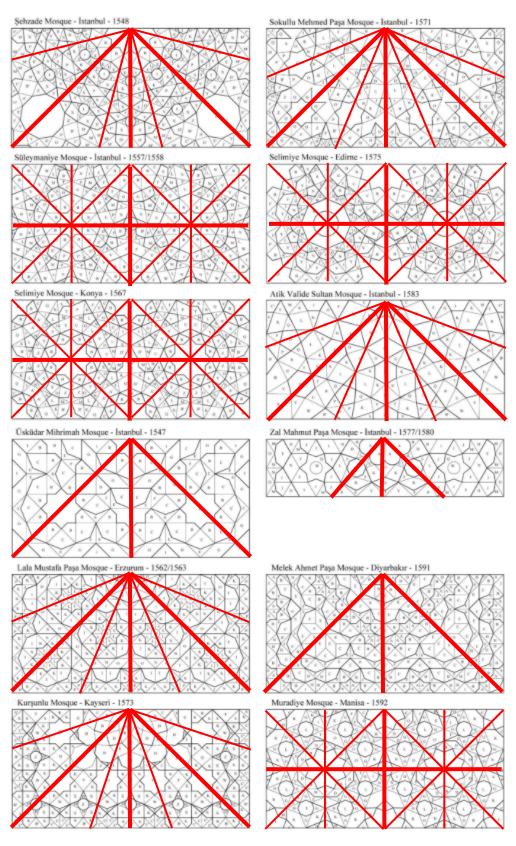
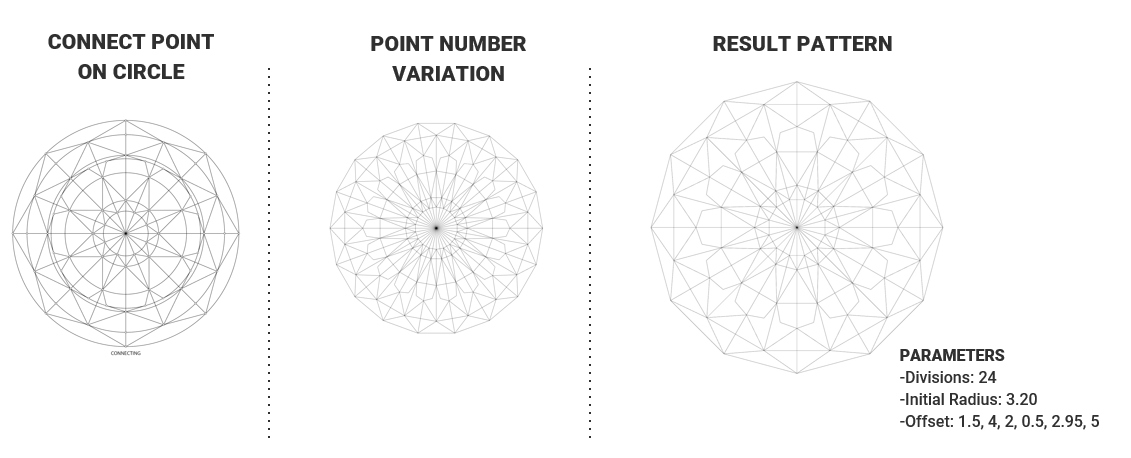
After studying in 2D we went onto 3D first to try to parametrize a muqarnas, with a radial array and projecting the points into a dome to be able to adjust these control points and create the shell and curved modules with them.
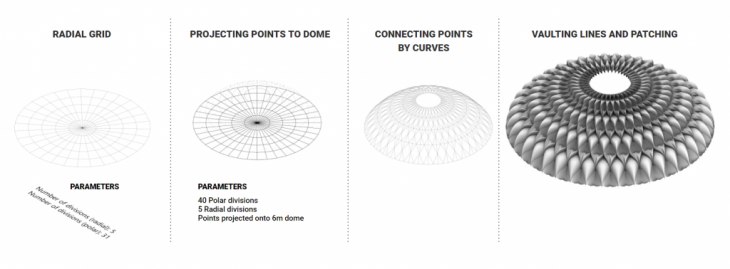
In another direction, we created our own digital handmade 3D Modules, as the real muqarnas are built to then aggregate them.
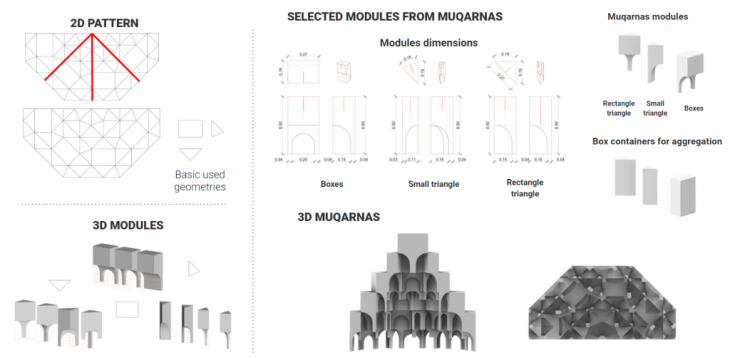
SITE
We chose a site to propose to build some passive design pavilion for shading and collecting rainwater in el Cuña Verde Parc, in Madrid.
OBJECTIVE
- Combine two different system by using methodologies of radial symmetry, shell structures and module aggregation.
- Passive design pavilion with a rainwater collecting system
- Pavilion for shading near sports facilities.
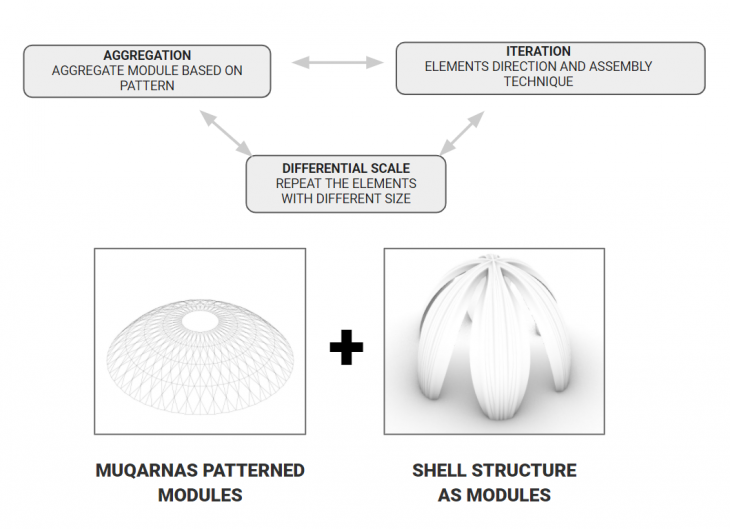
SYSTEM COMBINATION
A number of studies has been done in different directions in order to test how we could combine these two totally different systems.
- 2D pattern from the muqarnas was layered and connected in 3 different levels. Then the parameters of points were variated.
- At the second study, we used module aggregation by using box morph and the modules.It was a very interesting approach that we made a curved shell form with the Muqarnas blocks by ‘Box Morph’ function on Grasshopper. However, there was a limit for us to input other several blocks for the function. But also, the scale of the modules hasn’t significantly changed in diverse size. In other words, only one type of block that has been used was made up at the shell form by deforming itself.
- Used karamba for creating this structure with smart module aggregation.
- This second study model was mainly focused on its functional aspect. Therefore, although the shell allows to easily collect the water through the core, using the method of WASP with some rules to join faces of these boxes and fitting them into a tree-like shell structure.It resulted in a model losing the images of Muqurnas. We lost its original beauty of fractal aggregation with various scales of domes. The simplification of original Muqurnas blocks wasn’t related with the scale and it turned out as simple boxes. Although we had some rules, it was quite randomly arranged. Furthermore, two elements of shells and blocks don’t relate to each other. In other words, our random aggregation has made us lose the harmony from radial symmetry and fractal aggregation.
- Our final study reached our expectation with radial symmetry by repeating 4 different elements. We used an inverted sphere to move the control points of these structures. One module is created by a simple radial symmetric disposition then this module creates a beauty of fractal aggregation with another symmetrical arrangement. However, the circle on the top and bottom doesn’t cover the middle surface where people can sit and stay.
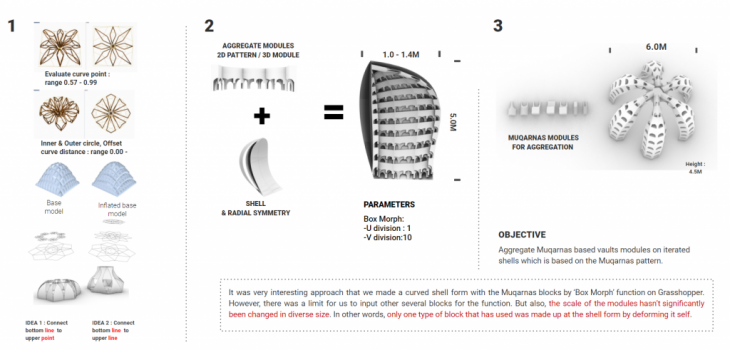
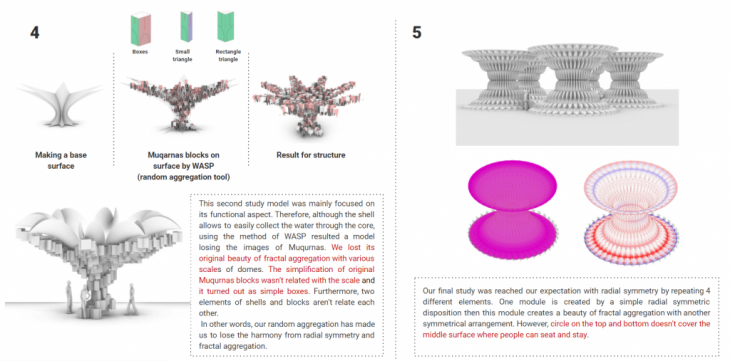
In consequence of all these studies, we replicated this onto this box base mesh. Which we divided into the four horizontal divisions and 7 vertical, with the naked edges as anchor points and then we set the clothed edges length to zero. With these lines we took the middle points, and diagonalized those divisions. So we were able to move these control points in the normal direction to create our curved shell modules.
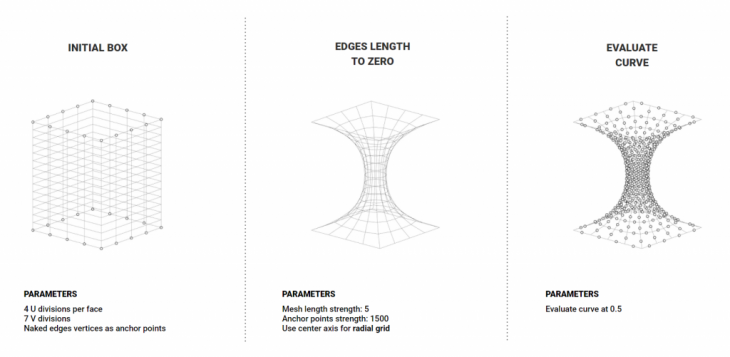
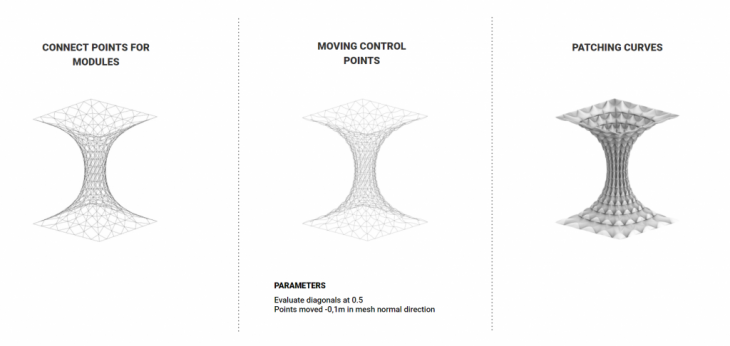
The pavilion is composed of 4 modules of 4m so that we have a 8m by 8m total. The height of the pavilion is 5m.
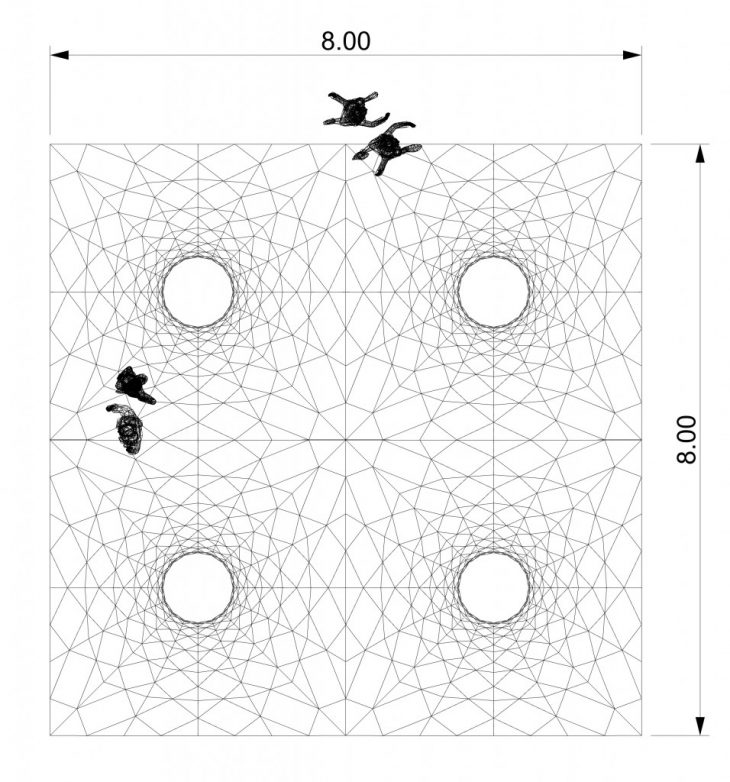
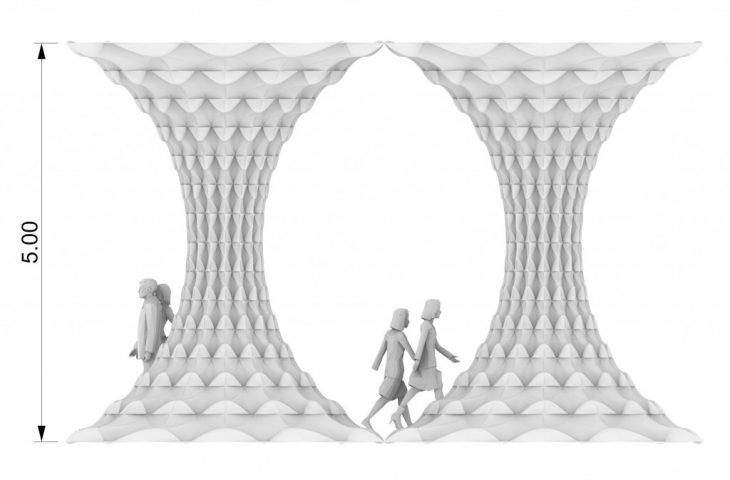
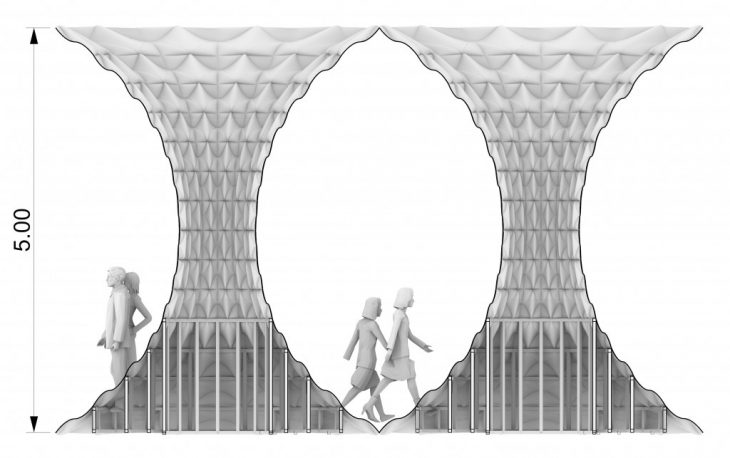
According to the structural analysis for one module, overall utilization is quite low. However there are several high utilization areas in the middle and the top area. Then except the 4 edges on the top, we have very low value of displacement.
Connecting with 4 modules reduced the max utilization 0.2% than using one module. But also, 4 modules are less displaced than one module.
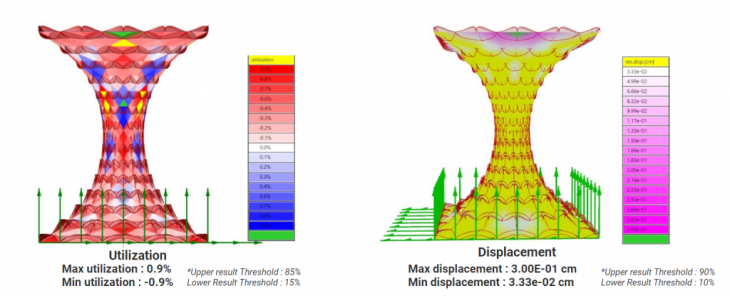
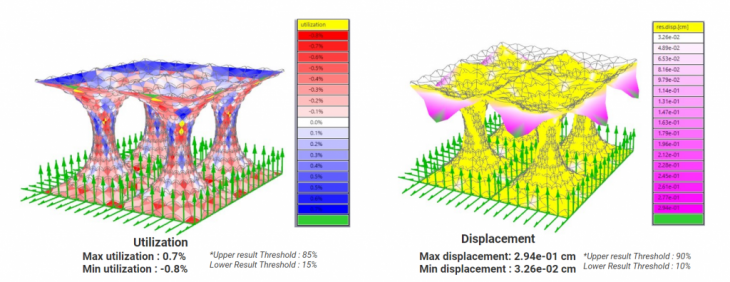
For the materials of its fabrication, we choose to use plywood because of its lightness. But also, it is suitable to form a curvilinear structure, reminiscent of Muqarnas in ancient mosques.
For the curvilinear structure, the ‘boat building method’ will allow to eliminate much of the need for frames or ribs.
Plywood panels are cut to shape and stitched together to form an accurate hull shape without the need for forms or special tools. Laser-cut lines for stitching require no glue to connect each element. We can reinforce this with fiberglass tape and thickened epoxy (or bioplastic), if we need.
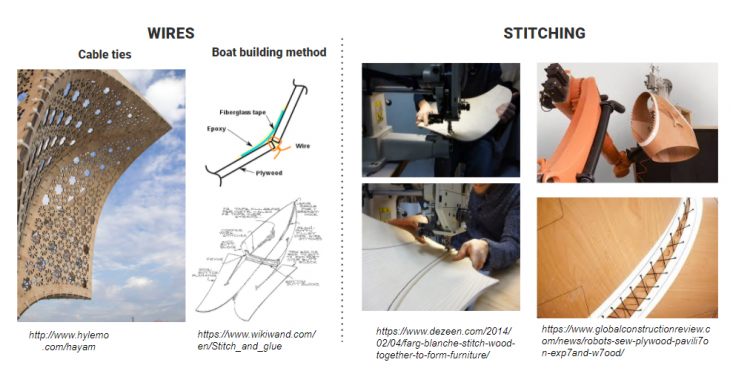
To fabricate this pavilion, here is the order below;
- All panels are cut by CNC or Laser Cutter (depends on cost/finish quality). All plywoods will have slits inside in order to curve the material.
- Top curved elements are cut from flexible plywood (2440 * 1220 * 4mm)
- The down area structural elements are made by hard plywood (2440*1220*12mm) on the timber structure
- The cut plywoods are connected to each other by wires or stitched with heavy-duty sewing machines.
One part of the module will be repeated to fabricate in order to assemble along the radial symmetry.
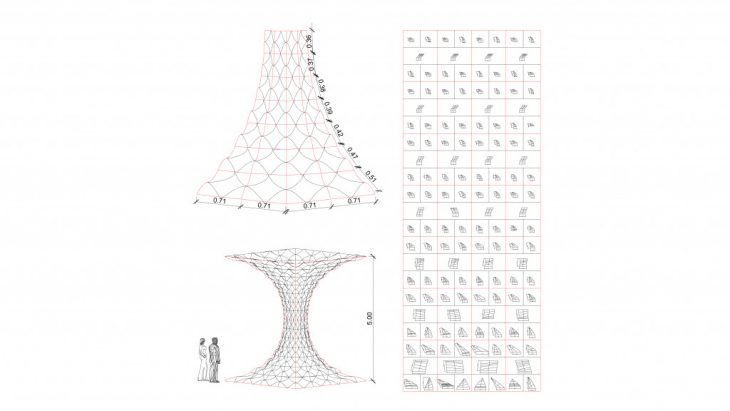
Here is the total components number for the pavilion fabrication.
Plywood sheets: 1120
- 4mm: 608
- 12mm: 512
Timbers: 128
- 0.7m : 32
- 0.45m: 32
- 0.35m: 32
- 0.26m: 32
- 0.23m: 16
- 0.6m: 16
- 0.95m: 16
- 1.37m : 16
Bracing : 64
Wires for connection
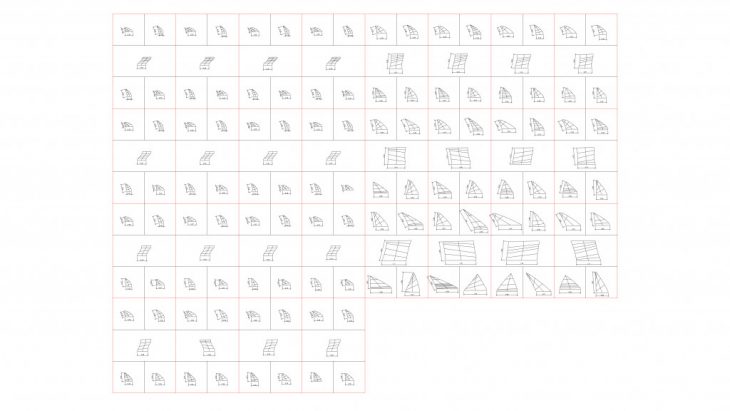
For the further development, user perception can be varied by changing the scale and connection of modules.
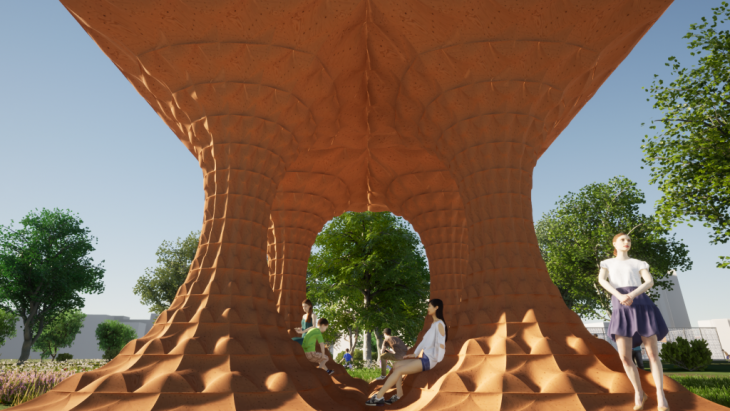
As you can see in the above image, user can play or sit on the middle of the pavilion. Sunlight emphasize the shade of the shell muqarnas pattern.
Shell muqarnas is a project of IAAC, Institute for Advanced Architecture of Catalonia developed in the Master in Advanced Computation for Architecture & Design in 2020/21 by
Students: KIM Kyunghwan and Jaime Cordero Cerrillo
Lead Faculty: Arthur Mamou-Mani
Faculty Assistant: Krishna Bhat
